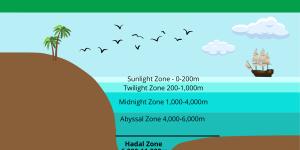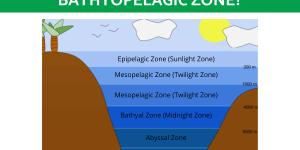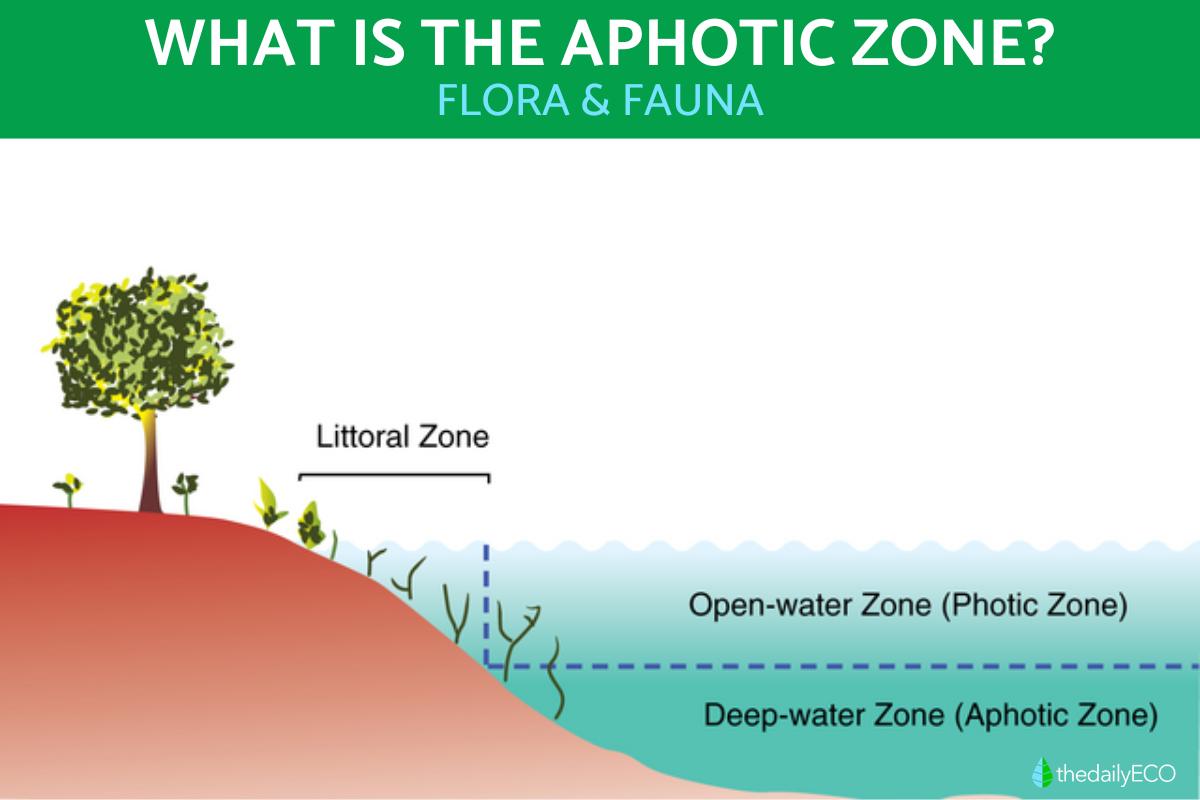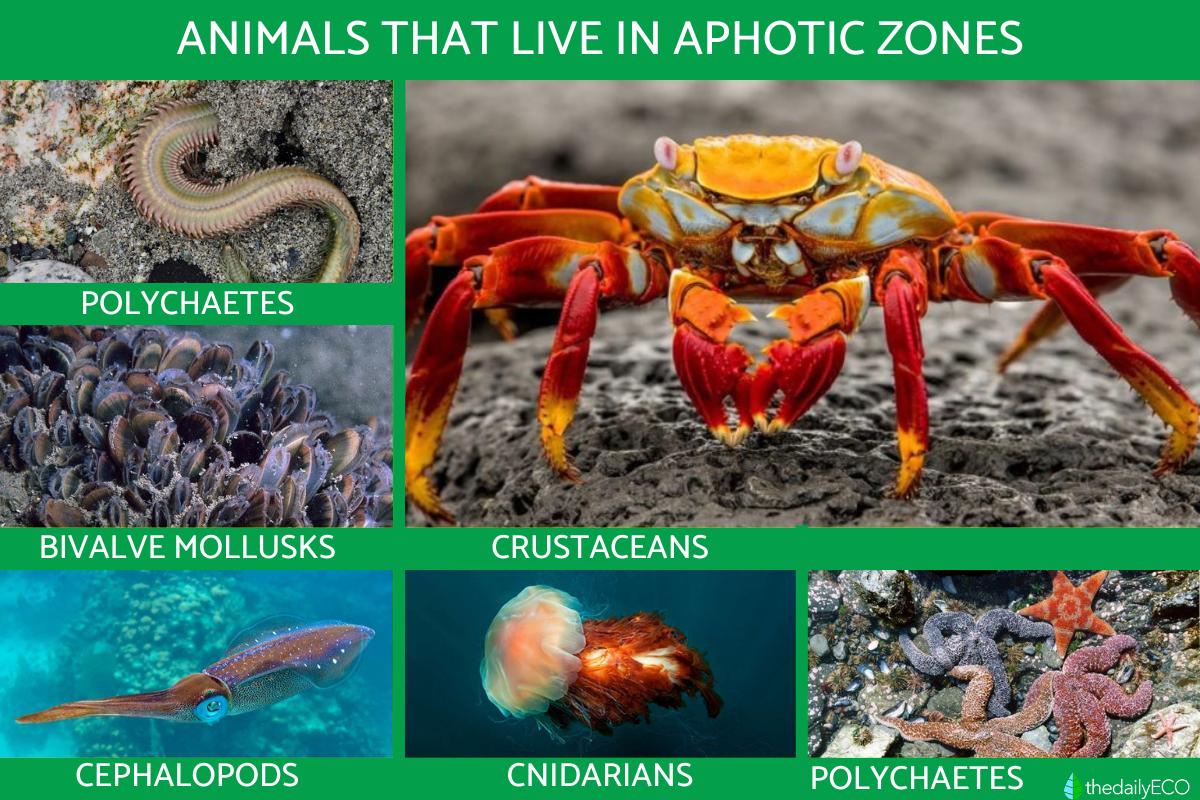What Is the Aphotic Zone?


Bodies of water such as oceans and lakes have different characteristics depending on the part in question. When the body of water is sufficiently large, it can be divided into various parts known as zones. These zones have varying characteristics, influenced by various factors. One of the most important is the presence of absence of light. The aphotic zone of a body of water is the area under the water's surface into which little to no light can penetrate. It exists in contrast to the photic zone, the area of water which is penetrated by light. This lack of light has various repercussions on the type of life which can live within the aphotic zone.
At thedailyECO, we ask what is the aphotic zone? We look at the characteristics of this aquatic ecosystem, as well as the flora and fauna that may or may not be able to live there.
What is the aphotic zone?
A basic definition of the aphotic zone is the area in a body of water in which photosynthesis is not possible due to the low percentage of solar radiation that reaches the stratum. These bodies of water can be marine or freshwater, but they have to be sufficiently deep to have an area where sunlight cannot reach. This means oceans and lakes can have an aphotic zone, but ponds and puddles cannot.
Now we have a definition, we can better understand them by looking at the characteristics of aphotic zones:
- Depth: for a body of water to have different strata which can be divided into zones, it needs to be of a certain depth. The aphotic zones usually extends from the end of the photic zone to the bottom of the body of water. Since its location depends on factors such as the volume and turbidity of the water, it can begin at variable depths. Generally speaking, it must start lower than 200 m depth, but it can be as much as 1,000 m deep in more transparent bodies of water.
- Oxygen shortage: oxygen is a limiting factor for the development of life. In the aphotic zone, oxygen concentrations are low. This is mainly due to the fact that it is far from the atmosphere and the consumption of oxygen by the organisms that inhabit this zone.
- Low temperature: since almost no solar radiation reaches this area, temperatures are usually very low. In the first meters of the aphotic zone, the temperature is usually more uniform. At greater depths it drops sharply.
- High concentration of nutrients: much of the sediment located in deep waters contains a high concentration of nutrients such as nitrates and phosphates. They can return to surface layers through upwelling and turbulent mixing of waters.
- Absence of photosynthetic organisms: due to low solar radiation, photosynthetic organisms cannot survive in the aphotic zone.
- Presence of chemotrophic organisms: there are other types of organisms in the aphotic zone that are autotrophic and provide their own food like photosynthetic organisms. Unlike photosynthetic organisms, they do not need light as their source of energy. Instead, they use reduced compounds such as ammonia as their main source of carbon. These organisms are called chemotrophic bacteria.
- Lesser amount of life: due to the prevailing conditions, life in this stratum is less diverse than in the photic zone. This is due not only to the absence of organisms capable of photosynthesizing, but the inhabitants of this area must have particular characteristics that allow them to survive.
Learn more about other strata of water bodies with our article on what is the pelagic zone in the ocean?
Flora of the aphotic zone
Because it is a stratum in which there is little or no light energy, the aphotic zone lacks photosynthetic organisms. Plants and algae depend exclusively on light for their survival, so there is very limited flora in the autotrophic zone. In fact, there is no true fauna.
The non-animal species which can survive in the aphotic zone are found primarily in chemotrophic organisms capable of producing organic matter from the energy they obtain from the oxidation of inorganic compounds. These compounds can be:
- Ammonia
- Nitrites
- Acids (e.g. hydrogen sulfide)
As with photoautotrophs, they use carbon from the carbon dioxide present in the environment to carry out this process. Chemotrophs fulfill the function of producer organisms in the aphotic zone of aquatic ecosystems. This is almost exclusive, although it is possible that photic organisms can drift down into this zone and contribute.
Now that you know the flora of the aphotic zone, let's learn what animals are found in the aphotic zone. You can also learn more about the different types of aquatic ecosystems and what types of organisms can survive in each of them.

Fauna of the aphotic zone
The fauna of the aphotic zone is represented by both invertebrate and vertebrate consumer animals that feed on the remains of dead organisms and microorganisms. These are usually in the form of organisms which are dragged or otherwise transport to deeper waters from the surface.
Many of these animals depend on some type of luminous lure, mimicry, large mouthparts (some which are extendable), compressed bodies and other characteristics that allow them to both prey and feed. Other animals are capable of migrating, preferably at night, in search of food.
Let's find out what animals are found in the aphotic zone:
- Benthic organisms: the benthic zone is the area containing the bottom sediment and is located at the deepest limit of the aphotic zone in sufficiently deep bodies of water. The diversity of deep benthic organisms is very high, much greater than the benthic zone that underlies shallow waters. A large percentage of these benthic organisms is represented by various species of polychaetes, bivalve mollusks and crustaceans, among others. Learn about some of the organisms which live in benthic zones with our article on what are amphipods?
- Bioluminescent organisms: bioluminescent animals are those that have the ability to generate their own light, rather than reflecting it from another source. Many fish, squid, cnidarians and echinoderms that live in deep waters have luminous organs. They are often in the form of lures that they use to attract their prey. Some organisms, such as shrimp, produce discharges of luminous clouds to escape from their predators. Some species of fish use bioluminescence in order to communicate with other individuals of the same species.
Discover more about these bioluminescent aphotic organisms with our article on how does bioluminescent light work?

If you want to read similar articles to What Is the Aphotic Zone?, we recommend you visit our Ecosystems category.
- (n.d.). The sea in depth. https://elmarafons.icm.csic.es/wp-content/uploads/2018/04/gu%C3%ADa-did%C3%A1ctica-luz-en-el-mar_red.pdf
- Smith, T.M., & Smith, R.L. (2007). Ecology.






